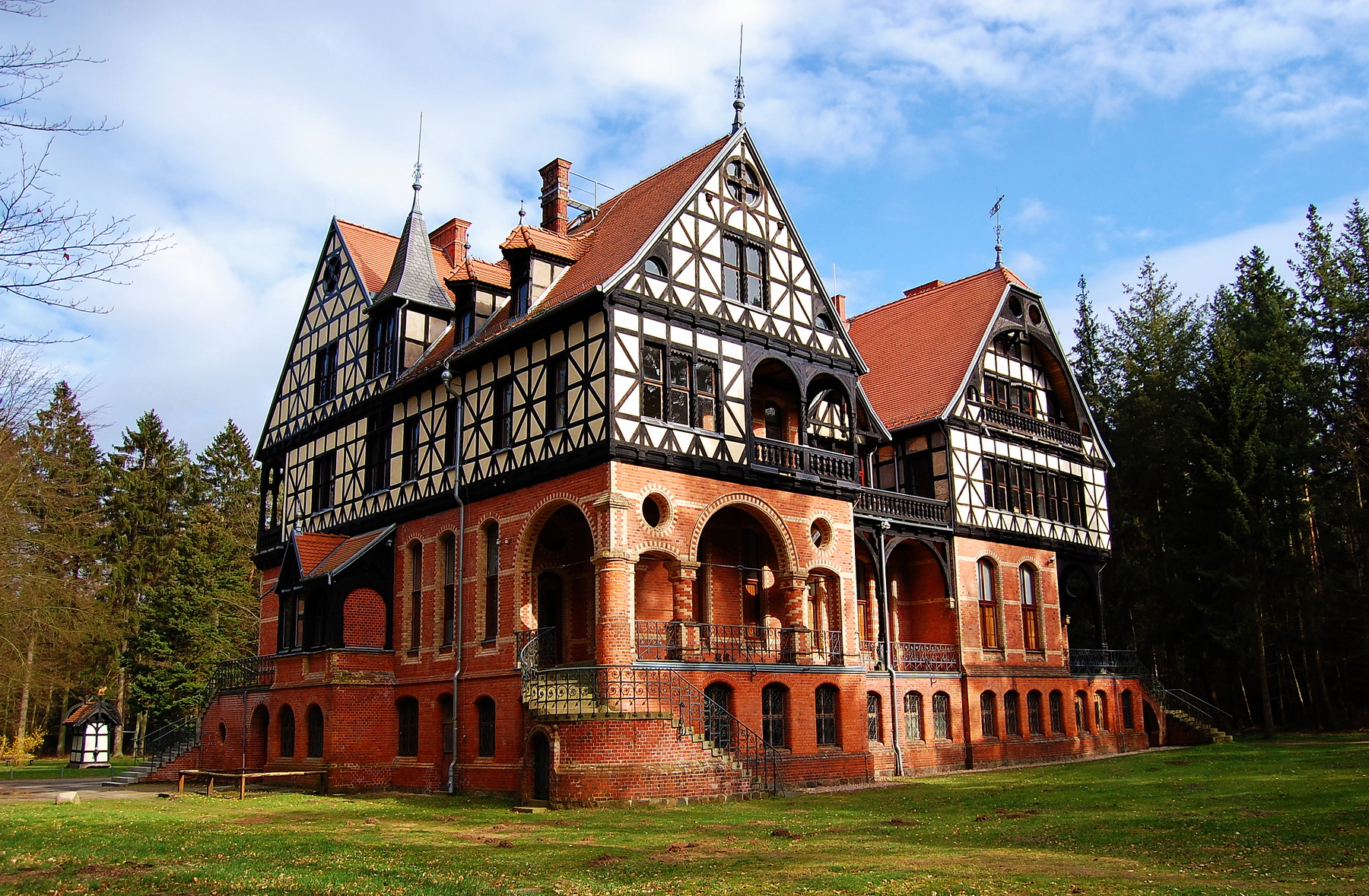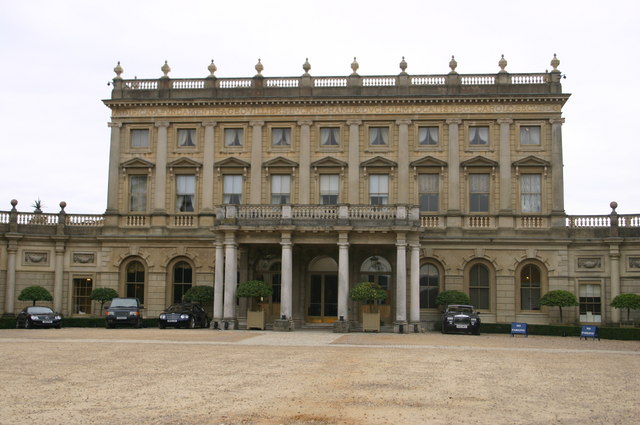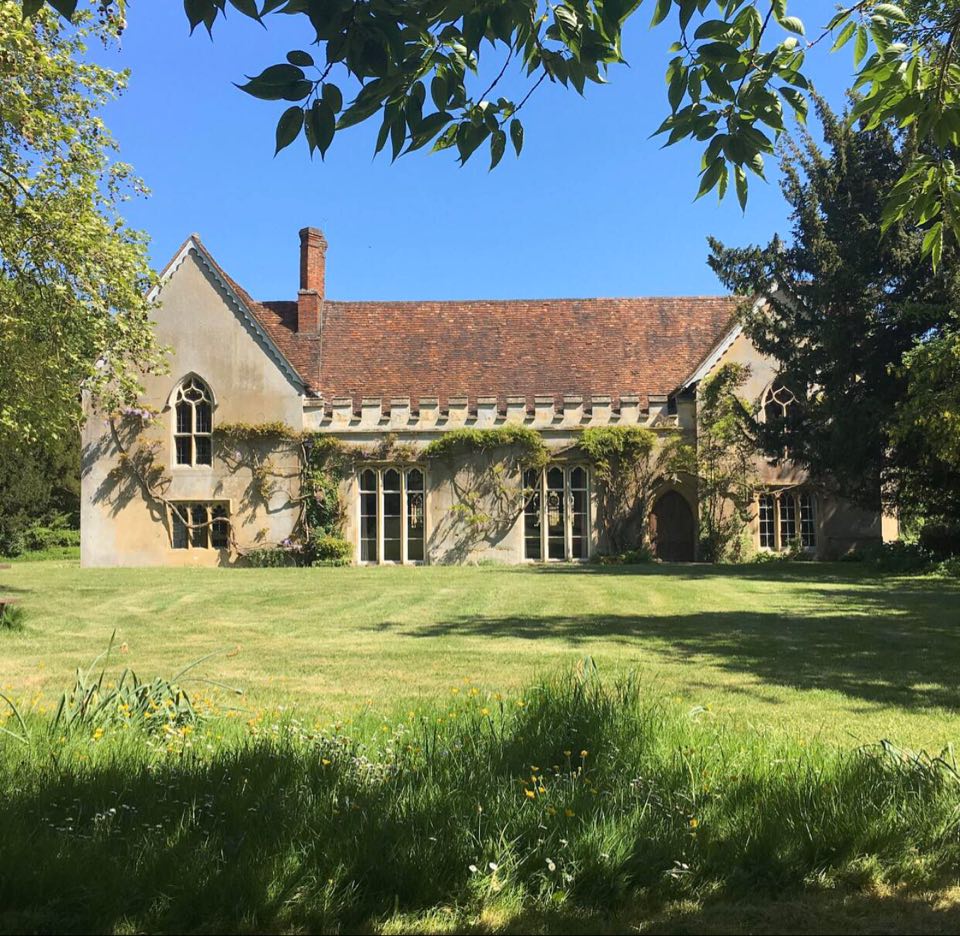|
Mansion
A mansion is a large dwelling house. The word itself derives through Old French from the Latin word ''mansio'' "dwelling", an abstract noun derived from the verb ''manere'' "to dwell". The English word '' manse'' originally defined a property large enough for the parish priest to maintain himself, but a mansion is no longer self-sustaining in this way (compare a Roman or medieval villa). ''Manor'' comes from the same root—territorial holdings granted to a lord who would "remain" there. Following the fall of Rome, the practice of building unfortified villas ceased. Today, the oldest inhabited mansions around the world usually began their existence as fortified houses in the Middle Ages. As social conditions slowly changed and stabilised fortifications were able to be reduced, and over the centuries gave way to comfort. It became fashionable and possible for homes to be beautiful rather than grim and forbidding allowing for the development of the modern mansion. In British Engl ... [...More Info...] [...Related Items...] OR: [Wikipedia] [Google] [Baidu] |
Cliveden
Cliveden (pronounced ) is an English country house and estate in the care of the National Trust in Buckinghamshire, on the border with Berkshire. The Italianate mansion, also known as Cliveden House, crowns an outlying ridge of the Chiltern Hills close to the South Bucks villages of Burnham and Taplow. The main house sits above the banks of the River Thames, and its grounds slope down to the river. There have been three houses on this site: the first, built in 1666, burned down in 1795 and the second house (1824) was also destroyed by fire, in 1849. The present Grade I listed house was built in 1851 by the architect Charles Barry for the 2nd Duke of Sutherland. Cliveden has been the home to a Prince of Wales, two Dukes, an Earl, and finally the Viscounts Astor. As the home of Nancy Astor, wife of the 2nd Viscount Astor, Cliveden was the meeting place of the Cliveden Set of the 1920s and 30s—a group of political intellectuals. Later, during the early 1960s when it wa ... [...More Info...] [...Related Items...] OR: [Wikipedia] [Google] [Baidu] |
Fifth Avenue
Fifth Avenue is a major and prominent thoroughfare in the borough of Manhattan in New York City New York, often called New York City or NYC, is the most populous city in the United States. With a 2020 population of 8,804,190 distributed over , New York City is also the most densely populated major city in the U .... It stretches north from Washington Square Park in Greenwich Village to 143rd Street (Manhattan), West 143rd Street in Harlem. It is one of the most expensive shopping streets in the world. Fifth Avenue carries Bidirectional traffic, two-way traffic from 142nd to 135th Street (Manhattan), 135th Street and carries one-way traffic southbound for the remainder of its route. The entire street used to carry two-way traffic until 1966. From 124th to 120th Street, Fifth Avenue is cut off by Marcus Garvey Park, with southbound traffic diverted around the park via Mount Morris Park West. Most of the avenue has a bus lane, though not a bike la ... [...More Info...] [...Related Items...] OR: [Wikipedia] [Google] [Baidu] |
The Breakers
The Breakers is a Gilded Age mansion located at 44 Ochre Point Avenue, Newport, Rhode Island, US. It was built between 1893 and 1895 as a summer residence for Cornelius Vanderbilt II, a member of the wealthy Vanderbilt family. The 70-room mansion, with a gross area of and of living area on five floors, was designed by Richard Morris Hunt in the Renaissance Revival style; the interior decor was by Jules Allard and Sons and Ogden Codman Jr. The Ochre Point Avenue entrance is marked by sculpted iron gates, and the walkway gates are part of a limestone-and-iron fence that borders the property on all but the ocean side. The footprint of the house covers approximately or 43,000 square feet of the estate on the cliffs overlooking Easton Bay of the Atlantic Ocean. The house was added to the National Register of Historic Places in 1971, and was designated a National Historic Landmark in 1994. It is also a contributing property to the Bellevue Avenue Historic District. Th ... [...More Info...] [...Related Items...] OR: [Wikipedia] [Google] [Baidu] |
Apartments
An apartment (American English), or flat (British English, Indian English, South African English), is a self-contained housing unit (a type of residential real estate) that occupies part of a building, generally on a single story. There are many names for these overall buildings, see below. The housing tenure of apartments also varies considerably, from large-scale public housing, to owner occupancy within what is legally a condominium (strata title or commonhold), to tenants renting from a private landlord (see leasehold estate). Terminology The term ''apartment'' is favored in North America (although in some cities ''flat'' is used for a unit which is part of a house containing two or three units, typically one to a floor). In the UK, the term ''apartment'' is more usual in professional real estate and architectural circles where otherwise the term ''flat'' is used commonly, but not exclusively, for an apartment on a single level (hence a 'flat' apartment). In some co ... [...More Info...] [...Related Items...] OR: [Wikipedia] [Google] [Baidu] |
Country House
An English country house is a large house or mansion in the English countryside. Such houses were often owned by individuals who also owned a Townhouse (Great Britain), town house. This allowed them to spend time in the country and in the city—hence, for these people, the term distinguished between town and country. However, the term also encompasses houses that were, and often still are, the full-time residence for the landed gentry who ruled rural Britain until the Reform Act 1832. Frequently, the formal business of the Historic counties of England, counties was transacted in these country houses, having functional antecedents in manor houses. With large numbers of indoor and outdoor staff, country houses were important as places of employment for many rural communities. In turn, until the Great Depression of British Agriculture, agricultural depressions of the 1870s, the estates, of which country houses were the hub, provided their owners with incomes. However, the late 1 ... [...More Info...] [...Related Items...] OR: [Wikipedia] [Google] [Baidu] |
Villa
A villa is a type of house that was originally an ancient Roman upper class country house. Since its origins in the Roman villa, the idea and function of a villa have evolved considerably. After the fall of the Roman Republic, villas became small farming compounds, which were increasingly fortified in Late Antiquity, sometimes transferred to the Church for reuse as a monastery. Then they gradually re-evolved through the Middle Ages into elegant upper-class country homes. In the Early Modern period, any comfortable detached house with a garden near a city or town was likely to be described as a villa; most survivals have now been engulfed by suburbia. In modern parlance, "villa" can refer to various types and sizes of residences, ranging from the suburban semi-detached double villa to, in some countries, especially around the Mediterranean, residences of above average size in the countryside. Roman Roman villas included: * the ''villa urbana'', a suburban or country sea ... [...More Info...] [...Related Items...] OR: [Wikipedia] [Google] [Baidu] |
Manor House
A manor house was historically the main residence of the lord of the manor. The house formed the administrative centre of a manor in the European feudal system; within its great hall were held the lord's manorial courts, communal meals with manorial tenants and great banquets. The term is today loosely applied to various country houses, frequently dating from the Late Middle Ages, which formerly housed the landed gentry. Manor houses were sometimes fortified, albeit not as fortified as castles, and were intended more for show than for defencibility. They existed in most European countries where feudalism was present. Function The lord of the manor may have held several properties within a county or, for example in the case of a feudal baron, spread across a kingdom, which he occupied only on occasional visits. Even so, the business of the manor was directed and controlled by regular manorial courts, which appointed manorial officials such as the bailiff, granted copyhol ... [...More Info...] [...Related Items...] OR: [Wikipedia] [Google] [Baidu] |
Great House
A great house is a large house or mansion with luxurious appointments and great retinues of indoor and outdoor staff. The term is used mainly historically, especially of properties at the turn of the 20th century, i.e., the late Victorian or Edwardian era in the United Kingdom and the Gilded Age in the United States. Definition There is no precise definition of "great house", and the understanding of varies between countries. In England, while most villages would have a manor house since time immemorial, originally home of the lord of the manor and sometimes referred to as "the big house", not all would have anything as lavish as a traditional English country house, one of the traditional markers of an established "county" family that derived at least a part of its income from landed property. Stately homes, even rarer and more expensive, were associated with the peerage, not the gentry. Many mansions were demolished in the 20th century; families that had previously split t ... [...More Info...] [...Related Items...] OR: [Wikipedia] [Google] [Baidu] |
Chatsworth House
Chatsworth House is a stately home in the Derbyshire Dales, north-east of Bakewell and west of Chesterfield, England. The seat of the Duke of Devonshire, it has belonged to the Cavendish family since 1549. It stands on the east bank of the River Derwent, across from hills between the Derwent and Wye valleys, amid parkland backed by wooded hills that rise to heather moorland. The house holds major collections of paintings, furniture, Old Master drawings, neoclassical sculptures and books. Chosen several times as Britain's favourite country house, it is a Grade I listed property from the 17th century, altered in the 18th and 19th centuries. In 2011–2012 it underwent a £14-million restoration. The owner is the Chatsworth House Trust, an independent charitable foundation, on behalf of the Cavendish family. History 11th–16th centuries The name 'Chatsworth' is a corruption of ''Chetel's-worth'', meaning "the Court of Chetel". In the reign of Edward the Confessor, a man ... [...More Info...] [...Related Items...] OR: [Wikipedia] [Google] [Baidu] |
Rhode Island
Rhode Island (, like ''road'') is a state in the New England region of the Northeastern United States. It is the smallest U.S. state by area and the seventh-least populous, with slightly fewer than 1.1 million residents as of 2020, but it is the second-most densely populated after New Jersey. It takes its name from the eponymous island, though most of its land area is on the mainland. Rhode Island borders Connecticut to the west; Massachusetts to the north and east; and the Atlantic Ocean to the south via Rhode Island Sound and Block Island Sound. It also shares a small maritime border with New York. Providence is its capital and most populous city. Native Americans lived around Narragansett Bay for thousands of years before English settlers began arriving in the early 17th century. Rhode Island was unique among the Thirteen British Colonies for being founded by a refugee, Roger Williams, who fled religious persecution from the Massachusetts Bay Colony to establis ... [...More Info...] [...Related Items...] OR: [Wikipedia] [Google] [Baidu] |
Estate (house)
An estate is a large parcel of land under single ownership, which would historically generate income for its owner. British context In the UK, historically an estate comprises the houses, outbuildings, supporting farmland, and woods that surround the gardens and grounds of a very large property, such as a country house, mansion, palace or castle. It is the modern term for a manor, but lacks a manor's now-abolished jurisdiction. The "estate" formed an economic system where the profits from its produce and rents (of housing or agricultural land) sustained the main household, formerly known as the manor house. Thus, "the estate" may refer to all other cottages and villages in the same ownership as the mansion itself, covering more than one former manor. Examples of such great estates are Woburn Abbey in Bedfordshire, England, and Blenheim Palace, in Oxfordshire, England, built to replace the former manor house of Woodstock. In a more urban context are the "Great Estates" i ... [...More Info...] [...Related Items...] OR: [Wikipedia] [Google] [Baidu] |
Condominium
A condominium (or condo for short) is an ownership structure whereby a building is divided into several units that are each separately owned, surrounded by common areas that are jointly owned. The term can be applied to the building or complex itself, as well as each individual unit within. Residential condominiums are frequently constructed as apartment buildings, but there are also rowhouse style condominiums, in which the units open directly to the outside and are not stacked, and on occasion "detached condominiums", which look like single-family homes, but in which the yards (gardens), building exteriors, and streets as well as any recreational facilities (such as a pool, bowling alley, tennis courts, and golf course), are jointly owned and maintained by a community association. Unlike apartments, which are leased by their tenants, condominium units are owned outright. Additionally, the owners of the individual units also collectively own the common areas of the prope ... [...More Info...] [...Related Items...] OR: [Wikipedia] [Google] [Baidu] |




.jpg)



